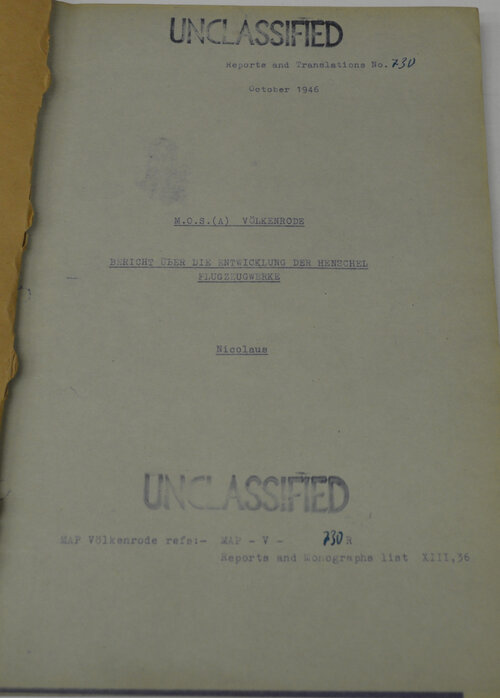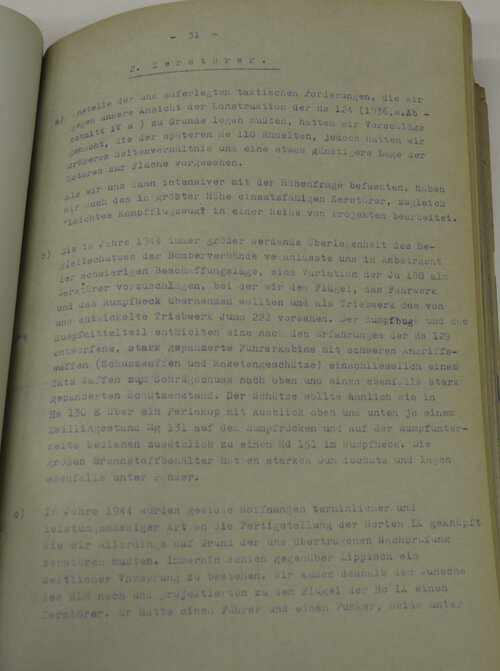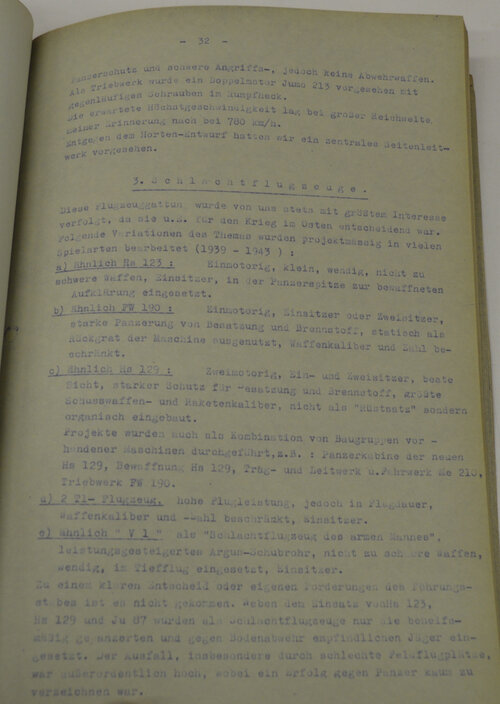Just discovered the detailed spec for this among some Horten papers. It's the Henschel P 132 (not to be confused with the Hs 132) - a flying wing destroyer powered by a single Jumo 222 E/F driving two 3-bladed props. No drawing though.
Rear or frontal engine, Dan?
In Nicolaus's postwar report for the Allies he describes the Henschel flying wing Zerstoerer designed in 1944:
"In 1944, certain hopes of a timely and efficient nature were linked to the completion of the Horten IX, which, however, we had to dash on the basis of the tests we carried out. After all, Lippisch seemed to have a time advantage. We therefore, following the wishes of the RLM, projected a destroyer to the wing of Ho IX. This had a pilot and a radio operator, both under armour protection, with heavy offensive armament, but no defence. The engine was a twin-engine Jumo 213 in the fuselage with counter-rotating airscrews. The maximum speed I could expect was 780km/h. Contrary to the Horten design, we had provided a central fin."
The 'Zerstoerer Hs P 132' outlined in the data sheet differs in having a single Jumo 222 E/F but it does have two three-bladed props (it doesn't explicitly state that they are contra-rotating). Similarly, it is a two-seater. The sheet is stamped '3. Nov. 1944'.
Several aircraft designs from this period were specifying the Jumo 222 E/F but this engine seems to have been abandoned in early 1945. Perhaps before the war ended Henschel switched to linked 213s?
Maximum speed given for the P 132 is given as 815km/h at 13km altitude, having reached 780km/h at 10km altitude.
I would guess that the engine was mounted centrally or to the rear, with the contra-rotating props in a pusher configuration, but that is only a guess.















